How to transform your garden with this cheap and useful material

‘That’s a bit niche, isn’t it?” was the reply of Ben Raskin’s publisher when he pitched the idea of a book about woodchip. But niche is very “now”, and it’s not just specialist topics such as woodchips that are, well… coming out of the woodwork. Unless you’ve been in outer space with the Bezoses, you’ll know that the Netflix hit The Queen’s Gambit is about chess. Chess! But despite the silent, glacial-paced theme, it’s a series full of sass and insight.
And what Ben Raskin lacks in Anya Taylor-Joy celebrity, he more than makes up for in practical, good gardening sense, as his very readable book lifts the lid on the how, why, what and when of this useful (and relatively modern) by-product.
“I finally decided to write the book after I had a ‘revelatory moment’, recounts Raskin. “I’d planted some trees, and some were waist-high and struggling, while in the same stand others were 12ft tall because I’d forgotten to move a pile of woodchip from around their base.”
This was the catalyst that sent Raskin on a mission, collecting testimony from other growers, including Iain “Tolly” Tolhurst and his partner, Lin. The couple have used composted woodchip on their land at Tolhurst Organic in south Oxfordshire to raise organic vegetables for decades, where, according to Raskin, “it was a game-changer, pushing productivity to another level”.
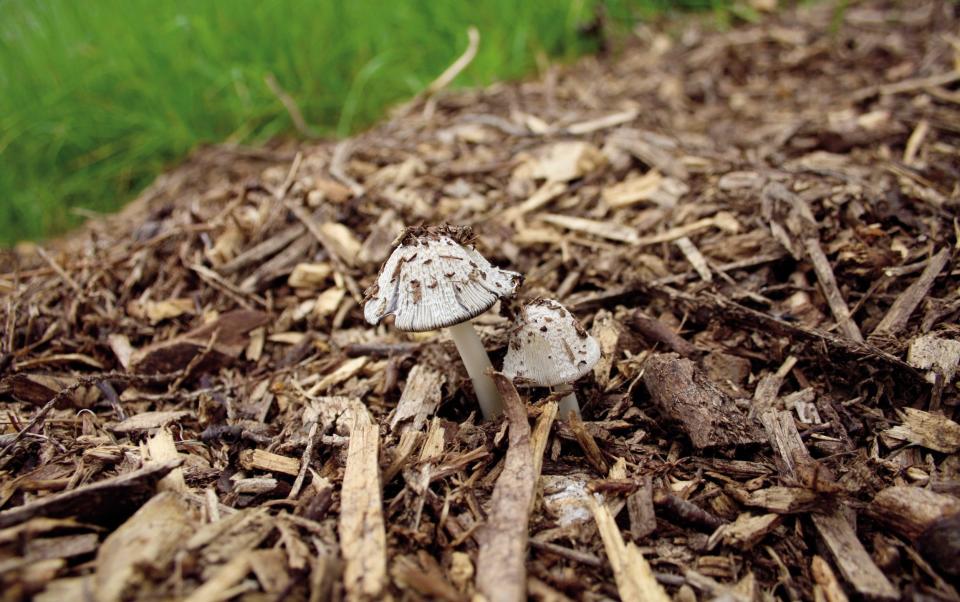
In his book, Raskin explores all the possibilities of using woodchip, from the less obvious, such as raising mushrooms, to boosting the foundation of soil-dwelling microlife beneath our gardens, to its value in locking in carbon.
Then there’s “no-dig gardening” – the till-free technique that swaps spadework for mulching. This is where easy-to-shift, long-lasting and economical composted woodchip comes in very handy.
“There is so much potential with mulches and not simply as an alternative to using herbicides to keep down weeds,” says Raskin. “For example, willow woodchip has been shown to reduce scab fungus on apples.” This technique could have huge implications for other diseases where the stress response promoted by salicylic acid in the willow bark (a component also used to make aspirin) increases plant immunity.
This is revolutionary stuff – but maybe it shouldn’t be. It takes me back to 2019 when I was in Ethiopia meeting farmers who, until the charity Send a Cow introduced them to compost and the benefits of manure, would burn all dung because it was widely regarded as useless. Reading Raskin’s book, I realise our attitude to woodchip is the same. It’s under our noses, but we’re blind to the possibilities.
Using woodchip, as in the case of the sub-Saharan dung, “will make land easier to tend and has the potential to improve the soil health and productivity. My gut feeling is that most [tree] species will offer something slightly different, and have their own niche, says Raskin.
And these days, with the imperative to garden in a greener way, it’s in the “niches” that we’ll find new techniques. Niche is good.
Chips with everything: 20 useful things to know
Moisture retention
Like using a lid on a pan of peas, woodchip mulch locks in moisture and protects the soil surface from desiccating winds and sunshine. It is particularly useful for ensuring new trees establish in their early years.
Weed control
A 5cm layer will eliminate annual weeds – but put down cardboard or thick wads of newspaper first and you’ll smother tough perennials such as couch grass, too. According to an RHS trial, hornbeam chips are the longest lasting, at two years plus. Also, unlike fabric weed membranes, chips are easy to spread among existing plants.
Soil building
Trees covered most of the British Isles for millennia, during which time their falling branches were recycled into the soil. Woodchips are a replacement for this lost natural process of soil-building.
Pest prevention
Woodchips from aromatic tree species can keep insects at bay. Pungent eucalyptus has long been used in animal bedding and chicken coops for its fungicidal, antimicrobial and fly-repellent properties. Along with conifers, it also has the potential to deter leaf-shredding winter moth larvae that live in the soil under fruit trees.
Soil health
The fungi responsible for breaking down woodchips have the potential to eliminate plant disease. In Australia, avocado growers noticed that trees in woods didn’t get the root-rotting phytophthora that plagued their plantations. Replicating forest soils with woodchip mulch saved their industry.
Clean habits
Once considered a vector for tree infections, chips from infected trees may actually help make the trees grown in them healthier. Studies cited in Raskin’s book have found that diseases don’t survive long on exposed woodchip or that the fungi responsible for decomposition effectively “clean away”pathogens. If using chips from a diseased source, follow advice from Washington State University, though –don’t dig in and keep them away from direct contact with the bark of healthy trees.
Plant medicine
Mulching with willow woodchip in spring may reduce the leaf- and fruit-scarring fungus apple scab. The salicylic acid prompts a disease-fighting immune response, making mulched trees less vulnerable. In the future, coppiced willow could become a companion crop for all organic orchards.
Peat-free
Composted woodchips are a viable replacement for peat in potting mixes. The homogenous open structure and low nutrient levels make chips good for seeds and potting woody plants.
RCW revelation
There’s woodchip from tree trunks and then there’s chips from the whippy branches of shrubs, fruit trees and hedge clippings that most gardeners cut and shred. This Ramial Chipped Wood (RCW) from the outer surfaces of plants contains 75 per cent of a tree or shrub’s proteins, cellulose and lignin – in other words, the good stuff. When applied to borders, RCW boosts growth over a longer period than regular rotted compost. So, instead of taking this kind of woodchip to the compost heap, spread it where it’ll release its goodness to nearby plants.
Nitrogen ‘lock-up’
“Lock-up” is a syndrome whereby wood temporarily sucks up nitrogen from the soil as it starts to rot. It is often the reason given for not using woodchip as a mulch in certain areas of the garden. However, according to Raskin’s work, this whole story is overstated. If chips are spread and not buried, they absorb a fraction of what lies in the soil profile. However, if the soil is hungry to start with, mulch in winter when nitrogen demand from plants is reduced, or scatter high-nitrogen chicken manure pellets around hungry crops before mulching.
Hügelkultur helper
Hügelkultur (as of course you will know) is a horticultural technique from the German meaning “mound culture”, whereby a giant hole is lined with branches, woodchip and compost and topped with soil (like an enormous bean trench). Plants sown on the mound make use of the slowly decomposing wood below. A useful technique for bringing nutrient-starved and poorly drained soils to life.
Stop rain splash
Under herbs, woodchip prevents rain from bouncing gritty soil up onto the leaves (saving expensive dental disasters) and similarly prevents soil-borne blackspot disease from splashing up from infected leaf litter.
Bioremediation
Woodchip helps to clean polluted soils by feeding the fungi responsible for degrading oil and diesel spills, thereby speeding up the cleaning process.
Erosion
The angular chunks mean woodchip mulches tend to lock together, making them useful for protecting bare-soil slopes and, for example, supporting strawberries on windy sites where straw blows away.
Conifer is OK
Conifer woodchips take longer to break down than those derived from deciduous trees. They’re also more acidic, so useful if mulching acid-lovers such as rhododendrons and blueberries.
Building carbon
By increasing soil microlife, health and plant growth, woodchip contributes to carbon capture within the soil.
Perfect paths
On allotments (or in perennial planting areas), woodchip walkways between veg rows prevent soil compaction and keep it in a weed-free, ready-to-plant state for when it is needed. Logs 10cm thick (eg sourced from tree surgeons) make excellent woodchip-holding sides for permanent paths.
Hard-wearing surface
Woodchips alleviate poorly drained and compacted ground by encouraging soil microlife and worms that burrow air holes through the soil profile. They also spread the weight of passers-by, particularly useful in areas of high-footfall, eg city parks.
Where to get it
Source woodchip from local tree surgeons. Those that have to pay to get rid of it may deliver a load for free. If using woodchip for compost, ask for deciduous/non-coniferous species.
Top for pots
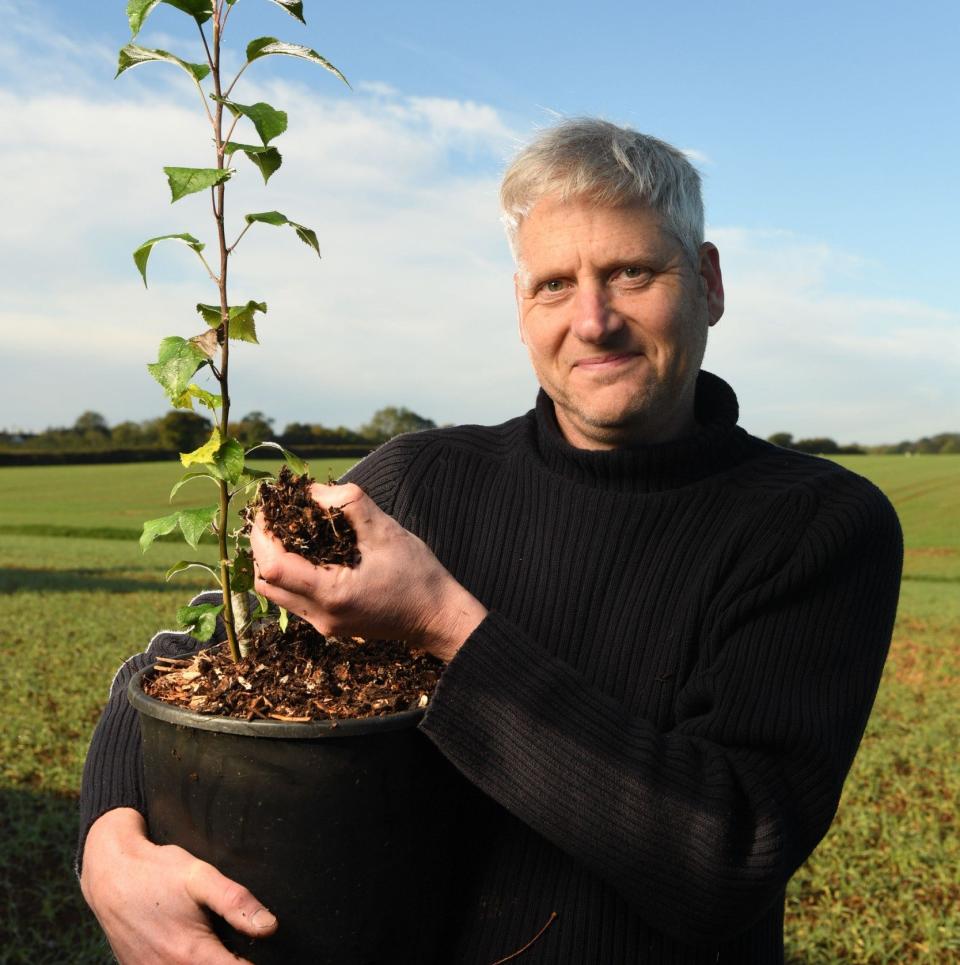
Mulching potted trees with woodchip reduces the need for watering and prevents compost from being blasted out by the hose.
Three of the best woodchippers and shredders
Shredders have fast-moving, semi-sharp blades that sever the wood lengthways along the grain, like an axe. They work well with leafy material, but are noisy and can’t handle large branches.
Chippers have blades that mash or crush across the grain, and although they can take hefty timber, large amounts of green material will clog the blades.
Einhell GC-KS 2540 electric shredder
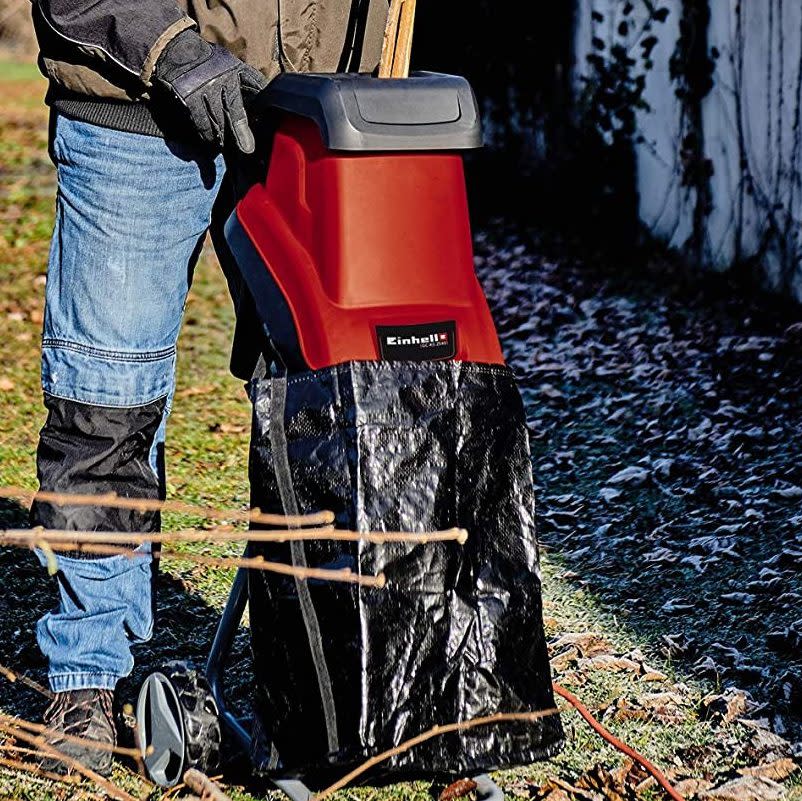
Lightweight and with a cutting diameter of 40mm, this is a good choice for light work and small gardens. £119.99, amazon.co.uk
Bosch AXT 25 TC electric shredder
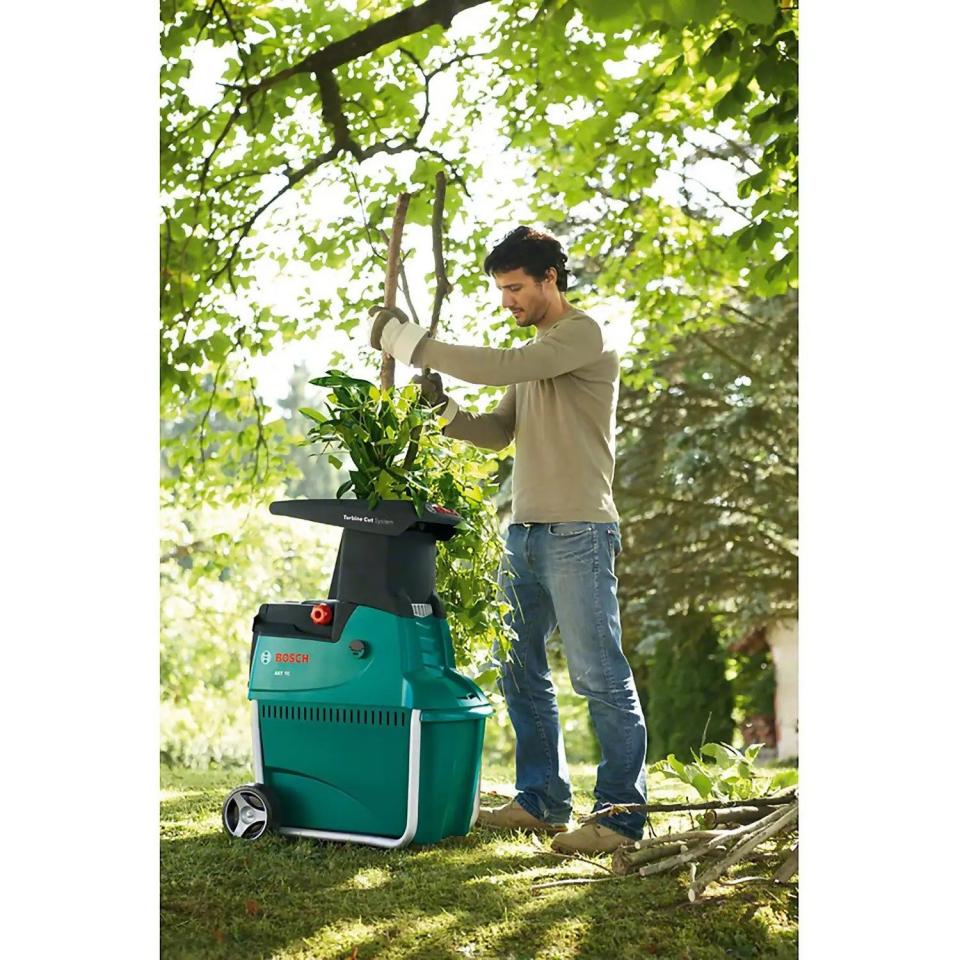
A quiet shredder with a slow-moving (hence the quiet) turbine-cutting system, for branches up to 45mm thick. Excellent build quality, ideal for larger gardens. £360, homebase.co.uk
Cobra CHIP650LE petrol shredder
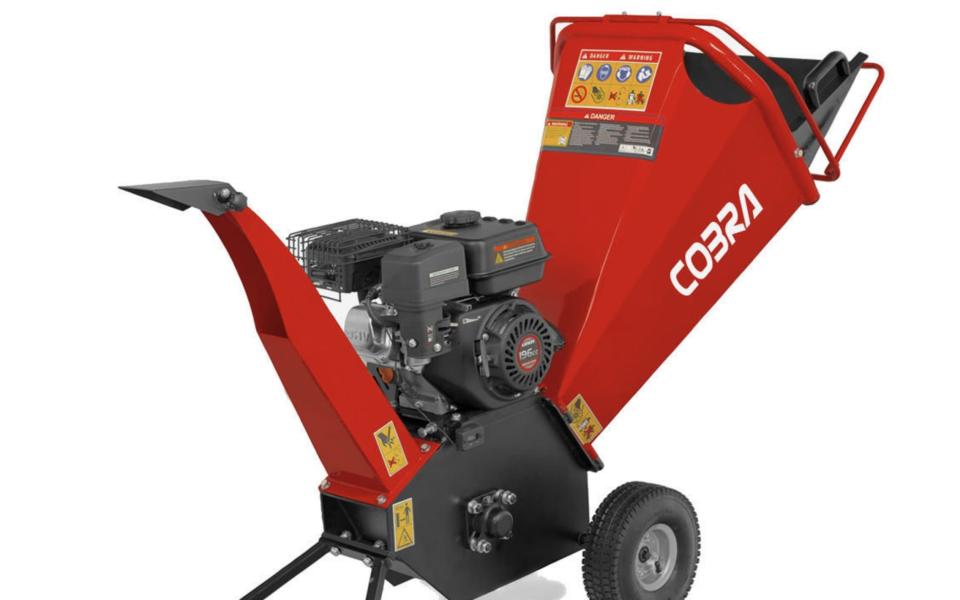
Suitable for large gardens, orchards and small-holdings. Relatively compact, easy-to-move design that, thanks to a 6.5hp petrol engine, takes branches of 80mm diameter. £934.99, gardenmachinery direct.co.uk
Chipping kit
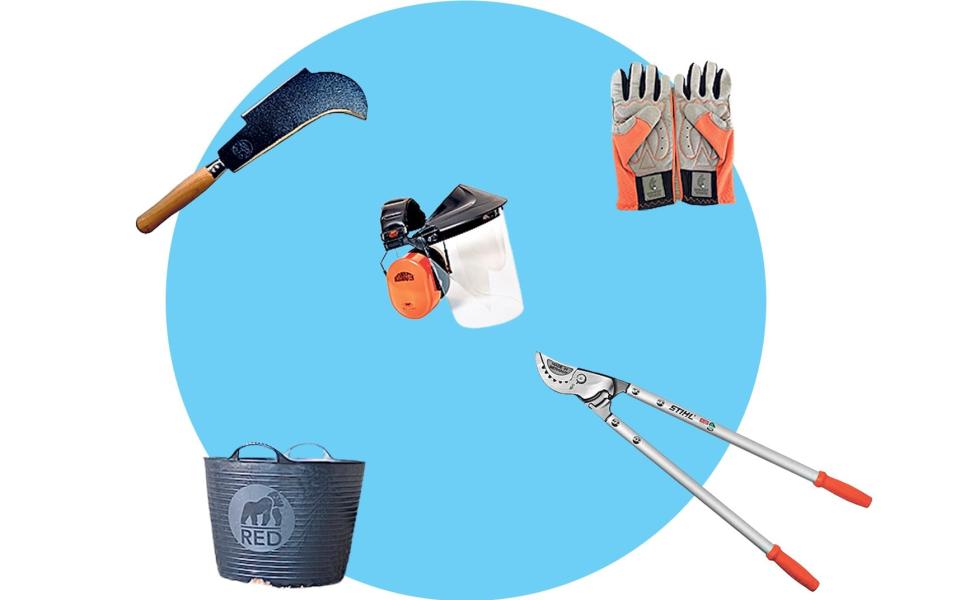
Billhook
The tool for “snedding”, which means quickly removing side branches so they fit in the chipper. Staffordshire designs (every region has its own version) are the best, as the billhook has a hefty cleaving blade on the back, perfect for splitting forked branches.
Carters Double Edged Newtown Billhook, £16.99, briantsltd.co.uk
Loppers
A cut above the rest in build quality (and, of course, price), these will last for ever.
Stihl PB30 Bypass Lopping Shears, £89, toolstoday.co.uk
Gloves
Tough gloves that allow enough movement to open secateurs without taking them off are the ideal.
Donkey Works Donkey Gloves, £14.95, thewonderfulgardencompany.co.uk
Trug
Handles make trugs a better bet for moving woodchip than the bags or boxes shredders are supplied with.
Red Gorilla recycled-plastic trug, £9.50 for a large size, redgorilla.red
Safety gear
Block out the clatter and whine of noisy machines and protect your eyes from wayward branches with an ear-defender and face-shield combo.
Bushmaster ear defender and visor, £28.95, thesafetysupplycompany.co.uk
Buy the book: The Woodchip Handbook by Ben Raskin (Chelsea Green Publishing, £20). Visit books.telegraph.co.uk or call 0844 871 1514.
Ben Raskin is an organic grower and head of horticulture and agroforestry at the Soil Association


